A few weeks ago we had a chance to step inside a synchrotron. This one:
View Larger Map
And we did. Proofpic:

Oh, no. This one is better, more sciency:
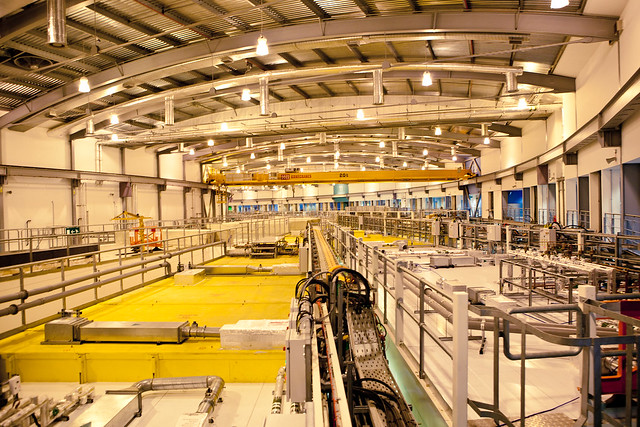
Here we went. On the visitors day, for free and for fun.
Unlike CERN, Diamond is not a particle collider. Quite moderate in size, it accelerates particles in order to produce a light beam, which is used for analysis of materials. Nothing on beyond-imagination fundamental particle physics, lots of quite down-to-earth practical problems, examples of which can be found on really friendly Diamond's website. There is also the academic Diamond's website, without flash games.
Structure.
This is the electron gun, initial shooting device, a bit more powerful that we used to have in my mom's CRT TVset:
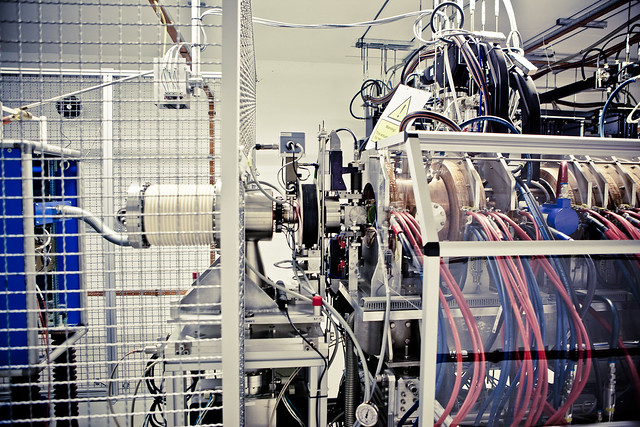
Then electrons are accelerated in linear accelerator and then shot into the nicely curving main ring:
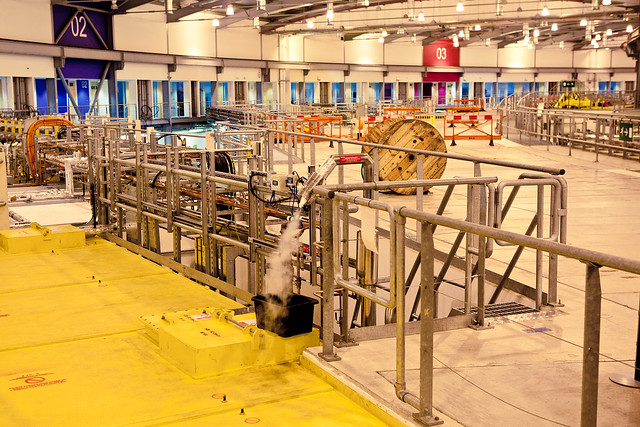
The main ring is placed in the gigantic concrete trench covered with concrete slabs:

The slabs can be removed ans placed back, but only in particular order, and here is the sign of the slab to start/end with (not a sign of some lost wedding with superstitious anticipation of a divorce):
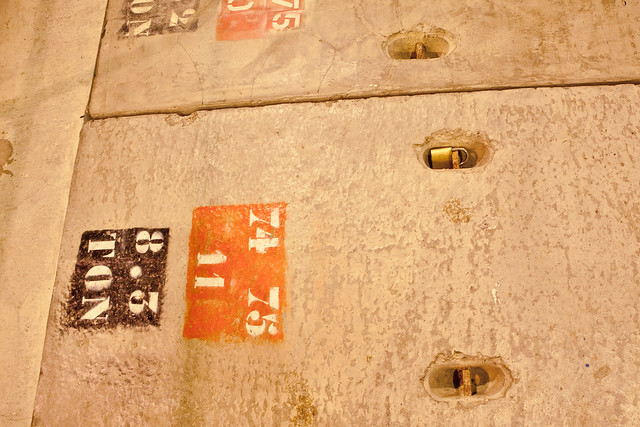
The main ring consists mostly of focusing (red) and bending
(green) magnets:
[UPD: Thank you Cedric! Unfortunately, I am not as gifted as Julius Cesar, who was able to learn about electron beams and take photos at the same time. :(]
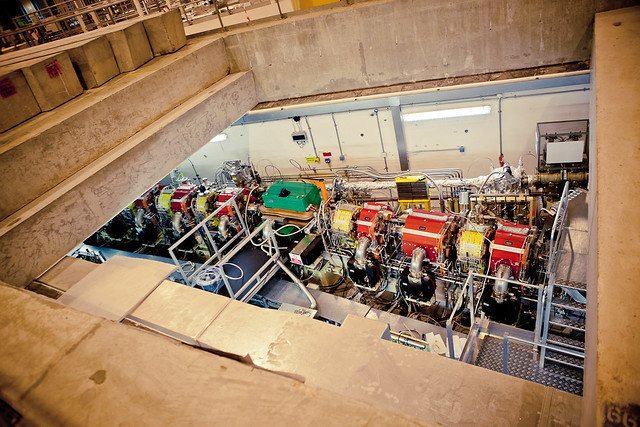
Nicely curving:
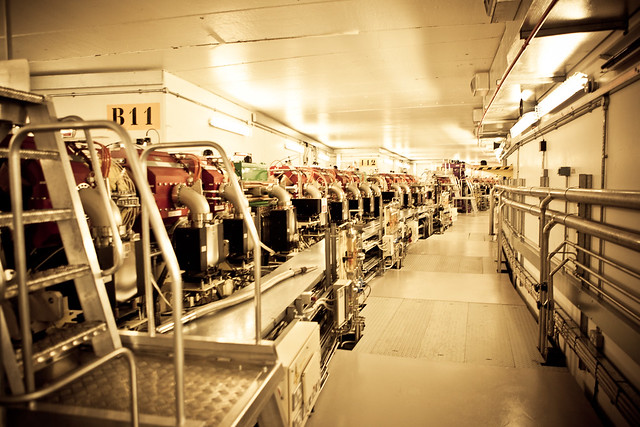
Then the electrons are wiggled in the Russian-born wiggler (bloody foreigners are coming here and wiggle our electrons, bastards):
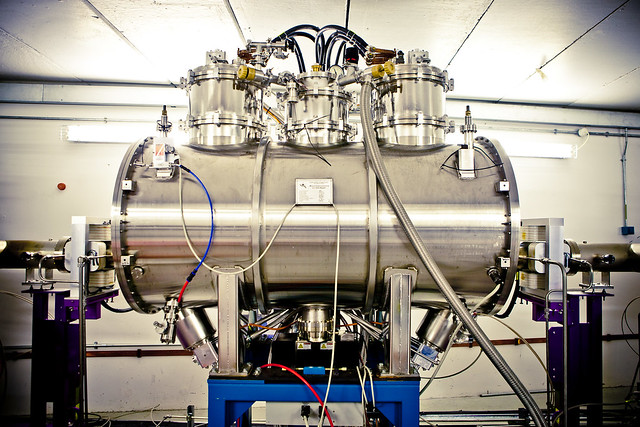
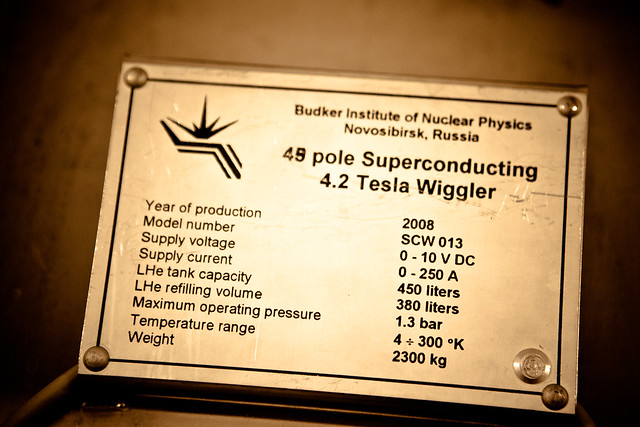
to produce the light. The light comes to the experiment cameras, hits materials first and photo-sensors second. Here is the small experiment camera:
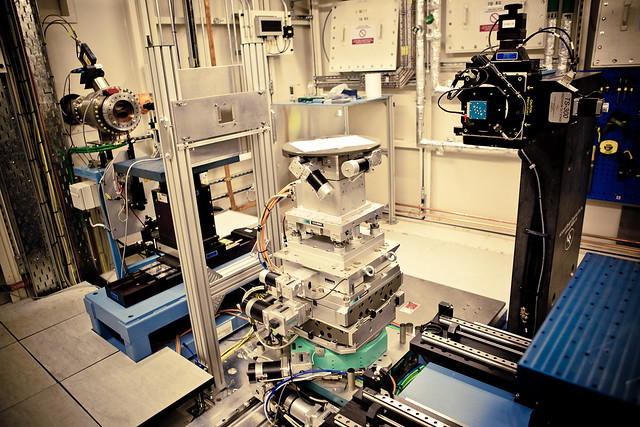
And the big one:
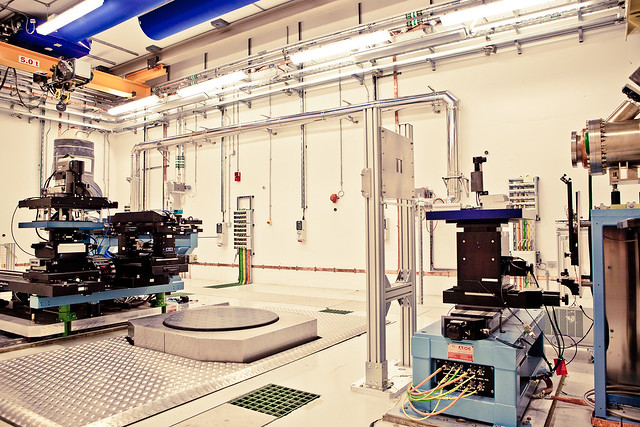
With a gentleman who showed us around on the platform for materials:

As far as I understood his role in the Diamond was that one in the right bottom corner:
Most of the experiments taking place in Diamond are catering academical needs. However, ~10% are commercial. For example, some bike producer wanted to analyse processes taking place in the working engine. Nothing is impossible, welcome on the platform:
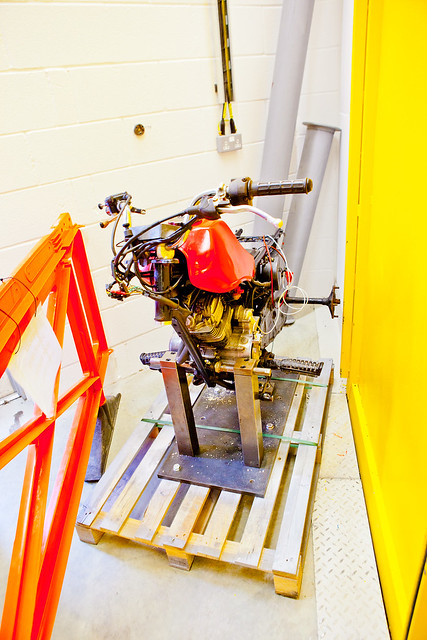
The cost of usage depends, obviously, on the time one need for their experiments, although a single crystal shot cost may start as low as £700.
Although, one of the institutions did not take a single second of the precious time to make their images. Women's Institute's textiles based on images received from Diamond were exhibited in the hall. And they were fun as well.

Some more assorted pictures:
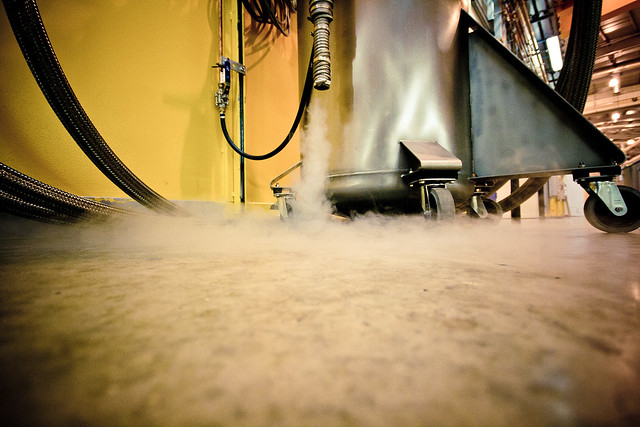
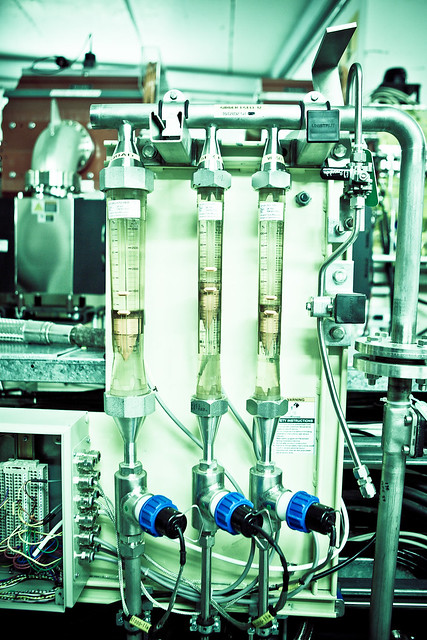
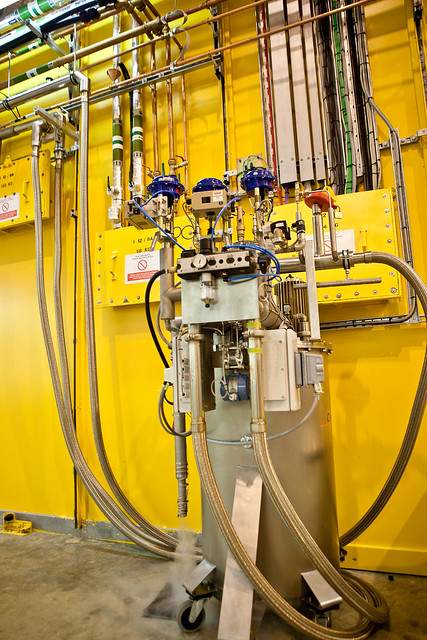
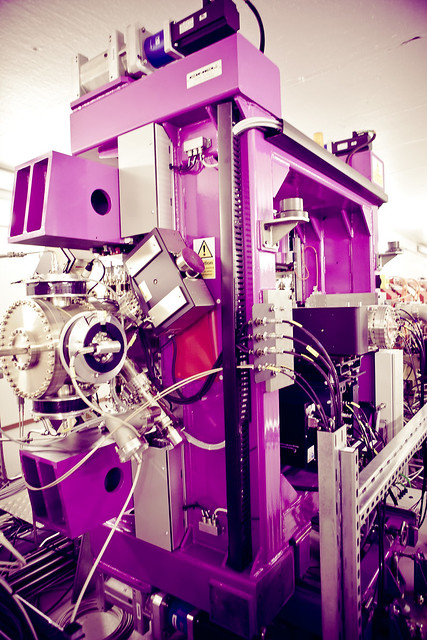
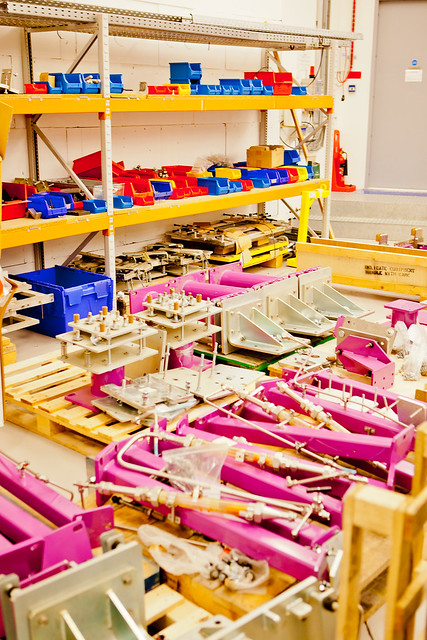
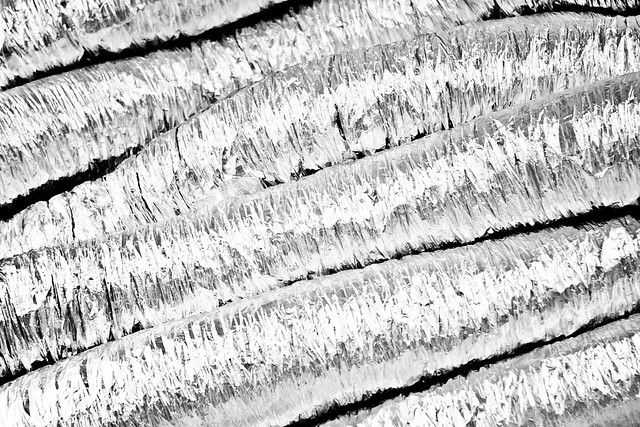
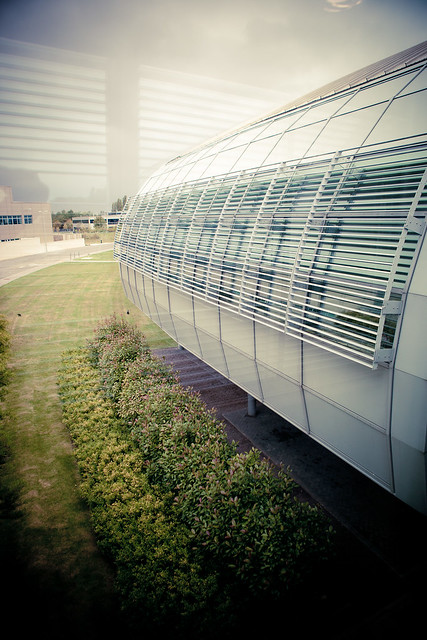

View Larger Map
And we did. Proofpic:

Oh, no. This one is better, more sciency:

Here we went. On the visitors day, for free and for fun.
Unlike CERN, Diamond is not a particle collider. Quite moderate in size, it accelerates particles in order to produce a light beam, which is used for analysis of materials. Nothing on beyond-imagination fundamental particle physics, lots of quite down-to-earth practical problems, examples of which can be found on really friendly Diamond's website. There is also the academic Diamond's website, without flash games.
Structure.
This is the electron gun, initial shooting device, a bit more powerful that we used to have in my mom's CRT TVset:

Then electrons are accelerated in linear accelerator and then shot into the nicely curving main ring:

The main ring is placed in the gigantic concrete trench covered with concrete slabs:

The slabs can be removed ans placed back, but only in particular order, and here is the sign of the slab to start/end with (not a sign of some lost wedding with superstitious anticipation of a divorce):

The main ring consists mostly of focusing (red) and bending
(green) magnets:
[UPD: Thank you Cedric! Unfortunately, I am not as gifted as Julius Cesar, who was able to learn about electron beams and take photos at the same time. :(]

Nicely curving:

Then the electrons are wiggled in the Russian-born wiggler (bloody foreigners are coming here and wiggle our electrons, bastards):


to produce the light. The light comes to the experiment cameras, hits materials first and photo-sensors second. Here is the small experiment camera:

And the big one:

With a gentleman who showed us around on the platform for materials:

As far as I understood his role in the Diamond was that one in the right bottom corner:
Most of the experiments taking place in Diamond are catering academical needs. However, ~10% are commercial. For example, some bike producer wanted to analyse processes taking place in the working engine. Nothing is impossible, welcome on the platform:

The cost of usage depends, obviously, on the time one need for their experiments, although a single crystal shot cost may start as low as £700.
Although, one of the institutions did not take a single second of the precious time to make their images. Women's Institute's textiles based on images received from Diamond were exhibited in the hall. And they were fun as well.

Some more assorted pictures:










2 comments:
You said : "The main ring consists mostly of accelerating (red) and bending (green) magnets". Acceleration is done by "accelerating RF cavities" and not by magnets. Two main types of magnets are used in a ring: bending magnet (dipoles) to curve the beam (and in the meantime that produces synchrotron radiation (light), in addition to the light produced by the wigglers) and focusing magnets (quadrupoles) used to focus the beam to keep it as small as possible.
Am very impressed with the pictures in this post! We (Diamond!) would like to use one of them as our Image of the Week (http://diamondlightsource.tumblr.com/), could you get in touch with sara.fletcher@diamond.ac.uk if you're happy for us to do that?
Re: magnets, if I'm being a pedant, the magnets do accelerate the electrons (certainly in the bending magnets) as acceleration refers to a change in direction as well as speed. Sextupoles and quadrupoles shape and focus the electron beam and bunches.
Post a Comment